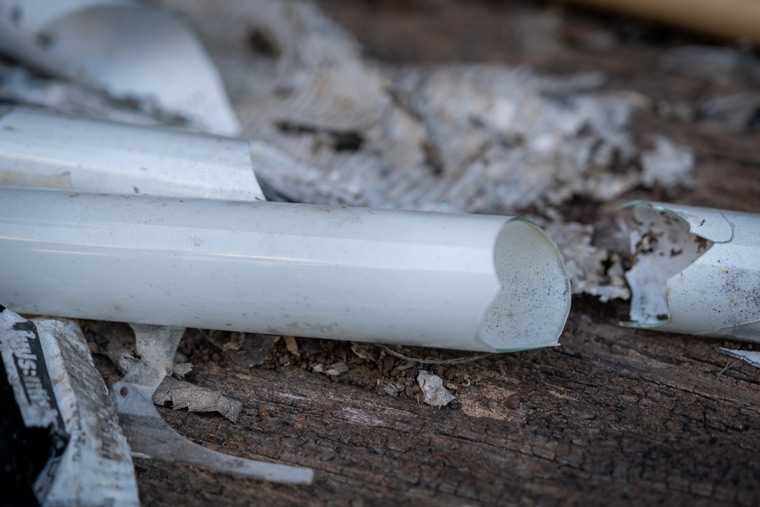WASHINGTON, D.C. — A new report recently released by the Clean Lighting Coalition highlights the environmental and health risks posed when fluorescent lamps break, especially to vulnerable populations. The report provides concrete steps government, industry, consumers, and others, like childcare providers, can take to accelerate the transition to LED lighting, which is mercury-free, more energy-efficient, more cost-effective, and widely available.
To mitigate the risks posed by mercury, the Coalition is calling on the Biden Administration to support the global phase-out of fluorescent lighting by 2025 at the upcoming meeting of the United Nation’s Minamata Convention on Mercury in March 2022. Furthermore, the Coalition notes that phasing out fluorescent lighting aligns with the Administration’s Executive Order on Tackling the Climate Crisis at Home and Abroad issued earlier this year.
“Fluorescent lamps have been tolerated for decades because they were considered the most energy-efficient option,” said Alicia Culver, Executive Director of the Responsible Purchasing Network and co-author of the report. “But this is no longer the case: LEDs are twice as energy efficient as fluorescent lamps, last 2-3 times longer, and they don’t contain mercury.”
- Health risks to those exposed to mercury, especially populations that are more vulnerable, such as pregnant people and their unborn babies, infants and young children, communities of color, and those living in low-income neighborhoods
- Health risks to workers exposed to mercury when lamps break during the manufacturing, installation, recycling, and disposal of fluorescent lamps
- Environmental hazards posed by the release of mercury in fluorescent lighting
- Benefits of transitioning to LED lighting, now considered the most cost-effective and reliable lighting option in the U.S. marketplace
“We know that mercury exposure, especially in early life, can lead to irreversible deficits in verbal skills, reduced attention span and motor control, and lower IQ,” said Michael T. Bender, director of the Mercury Policy Project and one of the report authors. “However, these exposure risks are avoidable by replacing fluorescents with LEDs.”
The report recommends steps that government entities, businesses, and consumers can take to accelerate the transition to LEDs. For example, it recommends state and local governments:
- Adopt and enforce mercury reduction laws to phase out fluorescents. For example, Vermont law bans sales of mercury-containing lamps unless the manufacturer has demonstrated that no comparably performing alternative nonmercury energy-efficient lamp is available at a comparable cost.
- Update guidance, including on websites, to highlight the hazards of mercury in fluorescent lighting and the advantages of LEDs including reduced risk, better energy efficiency, longer product life, and significant cost savings.
- Adopt new lighting specifications that prohibit vendors from offering fluorescent lamps, fixtures and ballasts on their state supply contracts. Maryland and Minnesota are already using this approach to eliminate many fluorescent lighting products from their contracts.
- Develop contracts for environmentally preferable lighting equipment that offer a wide array of LED lighting products at discounted prices. New York State and the City of San Francisco have lighting contracts that feature LEDs.
The report also highlights guidelines from the US EPA regarding strict protocols that should be taken when cleaning up broken fluorescent lamps.
“There is no safe level of mercury exposure and following US EPA guidelines in cleaning up a broken lamp is not easy,” says Coalition Deputy Director Ana Maria Carreño. “Most people, for example, either don’t know about or find it difficult to follow the proper procedures. Yet, with the tremendous advances in LED technology during the past decade, there’s no reason to continue using fluorescent lighting.”
Mercury is highly toxic to humans, which is why the World Health Organization lists it among the top 10 chemicals or groups of chemicals of major public health concern.
“The U.S. has been a global leader on many fronts,” said Michael Scholand of the Coalition and one of the world’s leading experts on lighting policy and technology. “But when it comes to taking action on fluorescent lighting, the U.S. lags behind some African countries and the European Union, which have already taken steps to phase out mercury-based lighting.”
“Mercury in Fluorescent Lighting: Unnecessary Health Risks and Actionable Solutions” was published by the Clean Lighting Coalition in partnership with the Mercury Policy Project and the Responsible Purchasing Network. The report was co-published by the following groups: Vermont Public Interest Research Group, Healthy Babies Bright Futures, Eco-Healthy Child Care, the Children’s Environmental Health Network, Clean Water Action and Ecology Center.
The Coalition is encouraging consumers, businesses, and others to sign a pledge to support the global transition to clean and efficient lighting, and to end the manufacture, export and import of mercury-containing fluorescent lighting in the United States by 2025. To learn more, visit https://cleanlightingcoalition.org/advocates-pledge.
Tagged with fluorescent, lightED